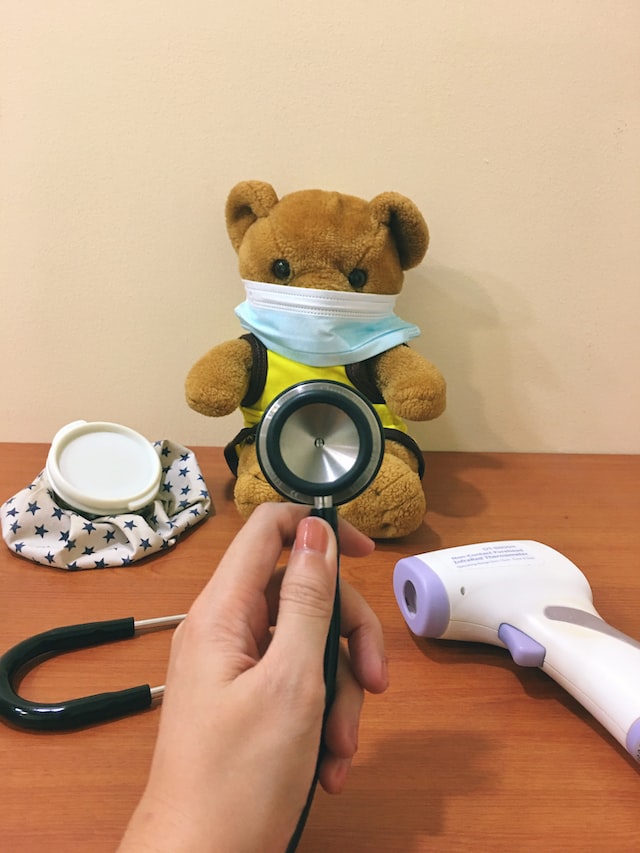Medical
Pfizer's New Treatment Elranatamab Receives FDA Breakthrough Therapy Designation For Relapsed Or Refractory Multiple Myeloma
Pfizer's new treatment, Elranatamab, has received Breakthrough Therapy designation from the FDA for the treatment of patients with relapsed or refractory multiple myeloma. Data from the trial showed a patient efficacy rate of 61.0% and that once the therapy is effective, efficacy is maintained for more than six months in over 90% of patients!

Pfizer's new treatment, Elranatamab, has received Breakthrough Therapy designation from the FDA for the treatment of patients with relapsed or refractory multiple myeloma. The trial data showed a patient efficacy rate of 61.0% and that once the therapy is effective, efficacy is maintained for more than six months in over 90% of patients!
Pfizer recently announced that its investigational cancer immunotherapy Elranatamab has received Breakthrough Therapy designation from the US FDA for the treatment of patients with relapsed or refractory multiple myeloma (RRMM).

Elranatamab is a bispecific antibody (BsAb) that targets both B-cell maturation antigen (BCMA) and CD3.
Bispecific antibodies (BsAb) are a novel cancer immunotherapy that bind and engage two different targets simultaneously. One end binds to a specific antigen on cancer cells and the other end binds to T cells, thus binding the two types of cells together. And Elranatamab applies this principle by binding at one end to the B-cell maturation antigen (BCMA), which is highly expressed on the surface of multiple myeloma cells, and at the other end to the CD3 receptor on the surface of T-cells, linking the two together and activating T-cells to kill myeloma cells.
Basis for recognition
This breakthrough therapy designation is based on the results of data from the Phase 2 MagnetisMM-3 trial. This was an open-label, multi-centre, single-arm, Phase 2 study that evaluated the safety and efficacy of Elranatamab monotherapy in patients with RRMM.
The results of the study showed that at a median follow-up of 6.8 months, patients had an efficacy rate of 61.0%. Of those patients who developed a response, there was a 90.4% chance of maintaining a response for ≥6 months.
Safety
Elranatamab is administered by subcutaneous injection, which is more convenient than intravenous administration, and reduces the risk of potential adverse events, thereby reducing the number of side effects experienced by patients following its use.

In the trial, Elranatamab demonstrated a manageable safety profile. The common adverse event asserted in treatment was cytokine release syndrome (CRS) (57.9%), but the majority were Grade 1 (43.2%) or Grade 2 (14.2%) adverse events.
In addition to breakthrough therapy designation, Elranatamab has been granted orphan drug status by the US FDA and the European Medicines Agency (EMA) for the treatment of patients with multiple myeloma. Elranatamab has also received Fast Track and Priority Drug status from the FDA and EMA, respectively, for the treatment of patients with relapsed or refractory multiple myeloma (RRMM).
"This breakthrough designation marks the FDA's recognition of Elranatamab as an innovative drug with great potential for the treatment of patients with RRMM, for whom treatment options have previously been limited. Pfizer will work with the FDA to accelerate the development of Elranatamab in the patient population." Dr. Chris Boshoff, Chief Development Officer, Global Product Development, Oncology and Rare Diseases, Pfizer, said.
Detailed data from the trial will be presented at the 64th Annual Meeting and Exposition of the American Society of Hematology (ASH 2022) in 2022. Next, Pfizer will continue to explore the effectiveness of Elranatamab as a monotherapy and in combination with standard or new therapies for the treatment of multiple myeloma.
About multiple myeloma
Multiple myeloma is a blood cancer that primarily affects the plasma cells in the bone marrow. Healthy plasma cells are an important part of the body's immune system, producing antibodies that help the body attack and kill bacteria and fight infection. When the plasma cells in the bone marrow become cancerous and grow out of control, the body develops multiple myeloma.
Multiple myeloma can lead to several types of problems in patients.

Lower red blood cell counts
With multiple myeloma, the overgrowth of plasma cells in the bone marrow can crowd out normal blood cells, resulting in a lower red blood cell count. Patients can develop: anaemia, where they become weak and tired; thrombocytopenia, which leads to bleeding or increased bruising; and leucopenia, with infection-related problems.
Bone and calcium problems
Myeloma cells not only interfere with the cells that help keep bones strong, they also produce a substance that dissolves bones faster, causing the patient's bones to become weak and break easily, leading to fractures; increased bone breakdown also raises calcium levels in the blood, causing a number of problems.
Infection
As mentioned above, abnormal plasma cells are unable to protect the body from infection, causing a range of infection problems.

Kidney problems
The antibodies produced by myeloma cells can damage the kidneys, leading to kidney damage and even kidney failure.
-
![]()
![]() MedicalDec 13, 2025
MedicalDec 13, 2025New Research: Cracking The Targeted Drug Resistance Puzzle And Eliminating Cancer Cells Before They Evolve!
-
![]()
![]() MedicalDec 12, 2025
MedicalDec 12, 2025New Research Shows Promise For Bone Marrow Transplant Recipient Patients To Reduce Treatment Side Effects!
-
![]()
![]() MedicalDec 11, 2025
MedicalDec 11, 2025Battle-tested, this real-world data confirms the clinical efficacy of Azulfidine!
-
![]()
![]() MedicalDec 10, 2025
MedicalDec 10, 2025Hyperthyroidism and pregnancy are not "irreconcilable"
-
![]()
![]() MedicalDec 09, 2025
MedicalDec 09, 2025Why should diabetes patients have their eyes checked




